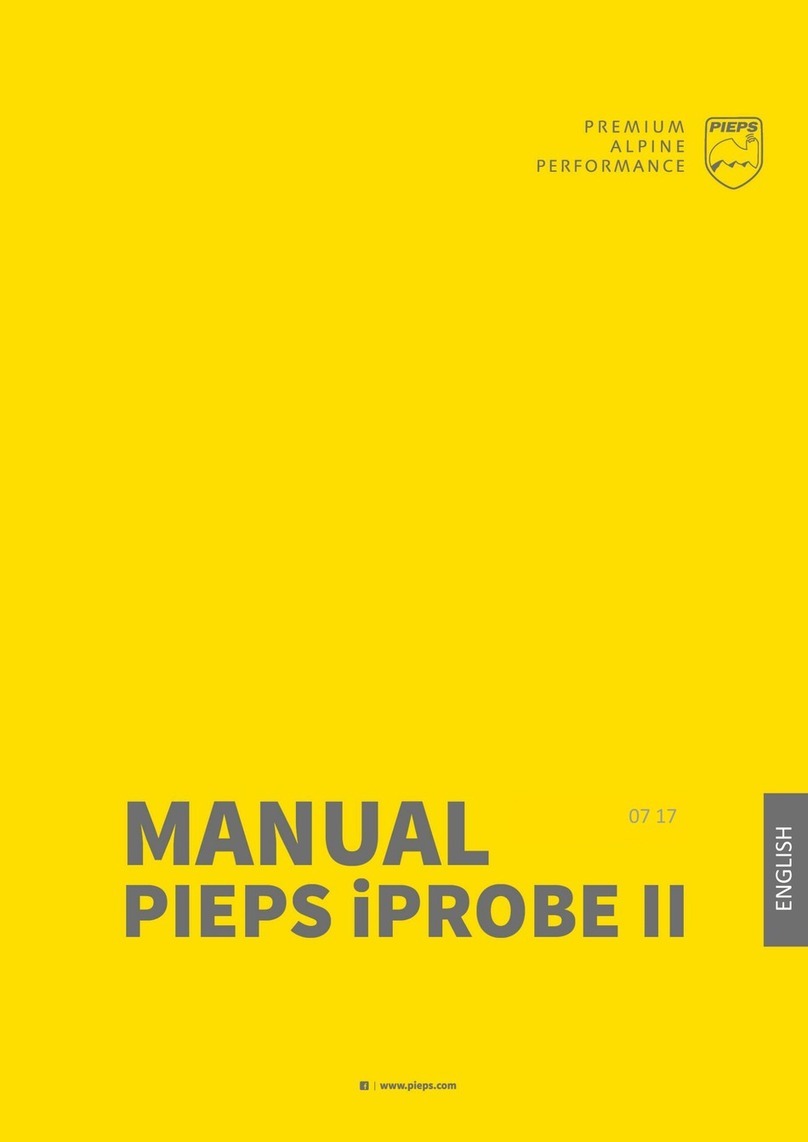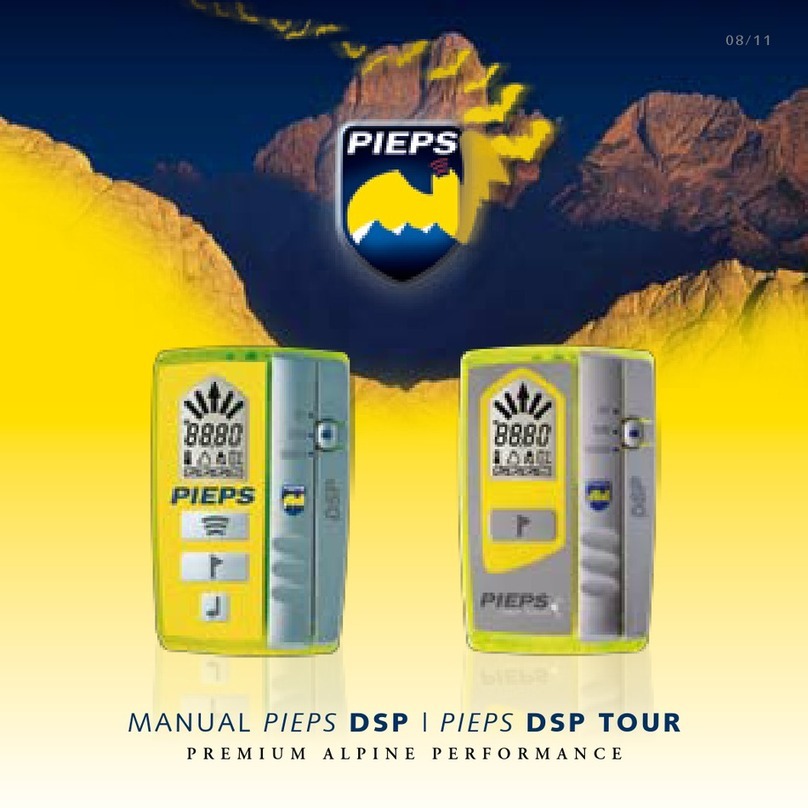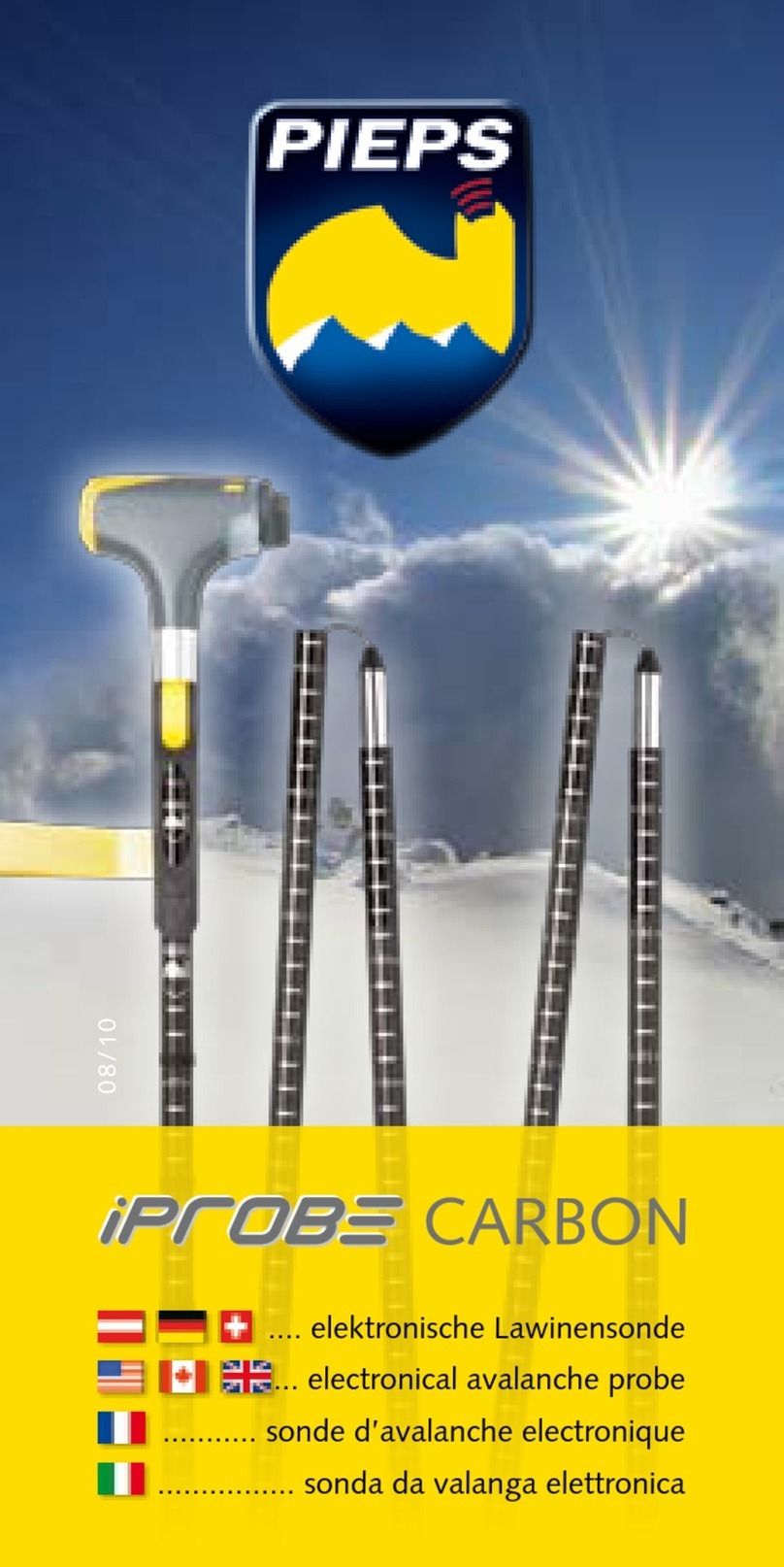SPECIFICATIONS
TECHNICAL DATA
Devise designation: PIEPS iPROBE
System: Electronic avalanche probe
with high quality carbon tubes
Receiving frequency: 457 kHz (intern. transceiver standard)
Power supply: 1 Battery, Alkaline (AA), LR6, 1,5V
Battery lifetime: min. 200 h
Approaching range: 2 Meter
Targeting range: 50 cm
Temperatur range: -20°C bis +45°C
Weight: ca. 290 g
Probing length: 2,25 m (mechanically)
Probing length total: approx. 4 m (mechanically + electronic target range)
WARRANTY CONDITIONS
• Thedeviceisguaranteedbythemanufactureragainstdefectsinmaterial
and workmanship for a period of two years from the date of purchase.
• Thiswarrantydoesnotapplytodamagecausedbyincorrectuseor
normal wear and tear.
• Anyfurtherwarrantyorliabilityforconsequentialdamageisexpresslyexcluded.
• Warrantyclaimsshouldbeaddressed-enclosingthereceiptofpurchase–
to the relevant sales outlet or directly to PIEPS.
CERTIFICATION: Warning: Any changes or modifications not expressly
approved by the manufacturer, responsible for compliance, could void the
user`s autority to operate this device.
Europe: Manufacturer: PIEPS GmbH, Country of manufacture: Austria; Gerätetype:
PIEPS Freeride; The device conforms to the Standard WEEE 2002/96/EC
Canada: IC: 7262A-IPROB01; USA: FCC ID: REMIPROBE01, This device conforms to
Paragraph 15 of the FCC regulations.
Operation is subject to the following two conditions: 1) This device may not cause
hamful interference, and 2) this device must accept any interference received, including
interference thar may cause undesired operation.
CONFORMITY: PIEPS GmbH declares hereby, that the product PIEPS iPROBE
fulfils all requirements and regulations of directive 1999/5/EC! The declaration of
conformity can be down-loaded at the following source: http://www.pieps.com/
certification_pieps.pdf
MANUFACTURER, SALES AND SERVICE
PIEPS GmbH, Frauentalerstraße 102, 8530 Deutschlandsberg, Austria
All information supplied without liability.




























